I wonder if you’re like me and grab any scrap of paper that happens to be handy to use as a bookmark. I’ve used grocery lists, notes from my husband, those annoying subscription cards that fall out of magazines, ticket stubs, receipts, postcards, newspaper articles I’ve clipped to read later, post-it notes with reminders to call the dentist… the list goes on and on. When I’ve finished a book, before putting it on my shelf, passing it on to a friend, or trading it in at a second-hand bookstore, I flip through the book to remove the bits of paper that have been marking my place. At least, I think I do. I’m sure I’ve left plenty of things behind for the next reader to find.
As I look through books in the Sutro Library’s collection I sometimes come across things that other people have left tucked between the pages. Such discoveries don’t happen often. The books in the Sutro Library vault have probably passed through many hands before arriving there, and things left between the pages have most likely long since fallen out or been removed. But occasionally something remains. When I look through the books I’m generally checking their condition – making sure there’s no mold, investigating the extent of worm damage, confirming that the binding is still secure and no pages are coming loose. It is always a wonderful surprise to find some small treasure instead of evidence of decay or damage.
For instance, in a book of poetry by an author identified only as Mrs. Hemans, published in 1839, I found a small strip of mesh embroidered with the word “modesty.”
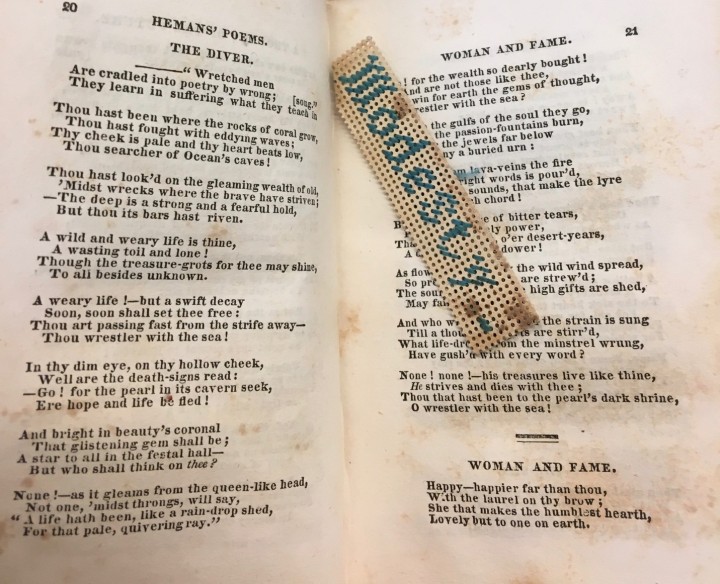
Perhaps it is only a coincidence that the piece of needlework marks a page with a poem entitled “Woman and Fame,” but the sentiment of the poem and the simple exhortation of the stitched word make a perfect pair. The narrator of the poem rejects the temptations of fame in favor of simpler rewards, which she deems more appropriate for women.
Though hast a charmed cup, O Fame,
A draught that mantles high,
And seems to lift this earthly frame
Above mortality.
Away! To me—a woman—bring
Sweet water from affection’s spring.
Someone has written a brief note on one of the first pages of the book: “Presented to Miss M Smith by A Friend.” I wonder about that “Friend.” Why did he or she give the book anonymously? Were they genuinely trying to save Miss Smith from a ruinous course of action? Or was the book given by an interfering busybody who was shocked by the advanced or ambitious Miss Smith? Did Miss Smith quail and repent when she saw the needlework and read the poem? Did she carefully preserve the stitchery as a reminder in case she should stray from an “appropriate” path again? Or did she snap the book shut with an immodest laugh and toss it aside, never giving the poem or the reminder to be modest another thought?
The library has a very well-used copy of The Works of Benjamin Franklin, published in Philadelphia in 1818. Marguerite Milton Wells has pasted her book plate on the inside of the front cover and someone named H. Scott has written his or her name boldly in ink on the title page. Perhaps it was Marguerite Wells or H. Scott who carefully annotated the lengthy book in pencil and copied out an inspiring verse on one of the back pages. Somehow, however, I imagine it was not either of them, but rather a little sister who put the paper doll between pages 190 and 191. And perhaps it was the same little sister who added a scribble to Franklin’s 1784 letter reproduced on page 190. I hope the little girl didn’t fret over the loss of her doll too much. And I hope her older sibling wasn’t too angry about the scribble!
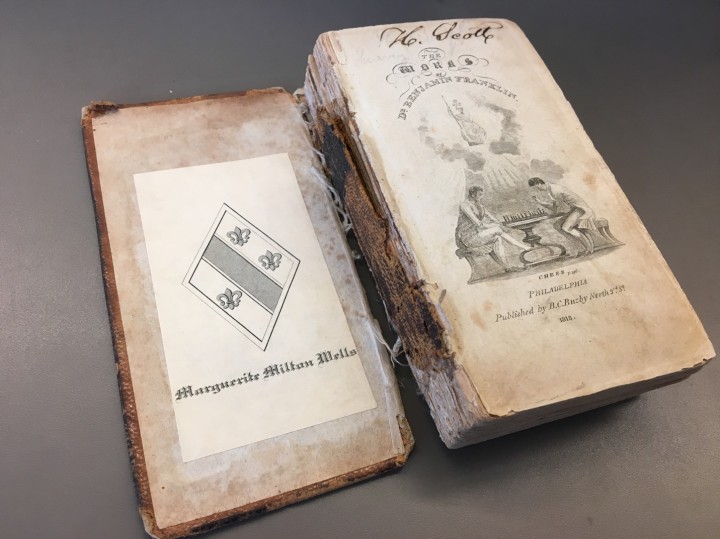
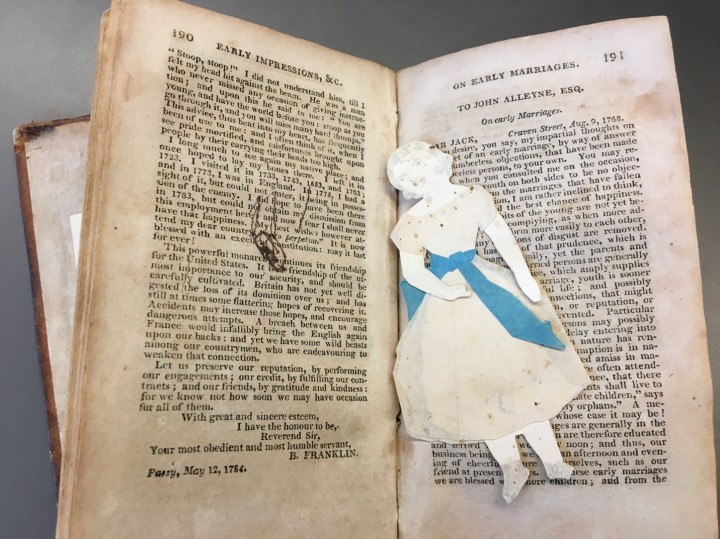 Colyn Wohlmut, a librarian that worked at Sutro Library until August 2018, once asked for my help holding a book open as she carefully used tweezers to remove leaves, long since dried out and now crumbling into tiny shards, which someone had pressed between the pages of a book. I was interested to see her place the pieces of the leaves into an envelope. Colyn told me that while organic matter left in a book is an invitation to hungry insects, the leaves are part of the book’s history and will be safely preserved.
Colyn Wohlmut, a librarian that worked at Sutro Library until August 2018, once asked for my help holding a book open as she carefully used tweezers to remove leaves, long since dried out and now crumbling into tiny shards, which someone had pressed between the pages of a book. I was interested to see her place the pieces of the leaves into an envelope. Colyn told me that while organic matter left in a book is an invitation to hungry insects, the leaves are part of the book’s history and will be safely preserved.
Indeed, even things that might seem innocuous can cause damage when left in a book. For instance, you can see where something left in this book has permanently stained the pages.
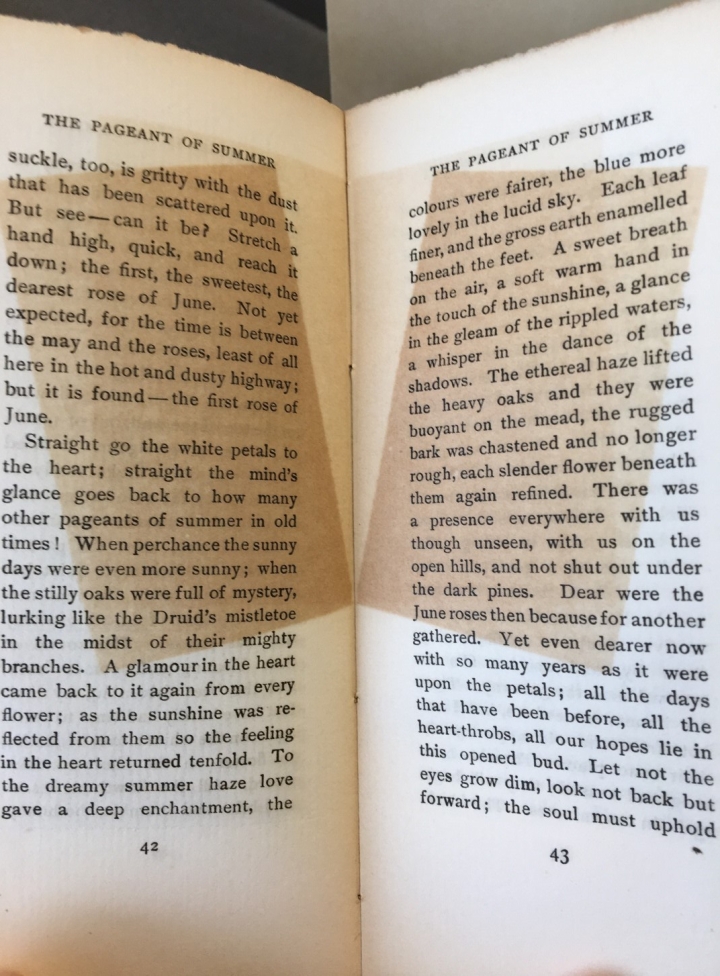
Even something as seemingly harmless as a plain slip of paper can cause damage. If the paper isn’t of archival quality, it contains acids or other chemicals which can create discoloration.
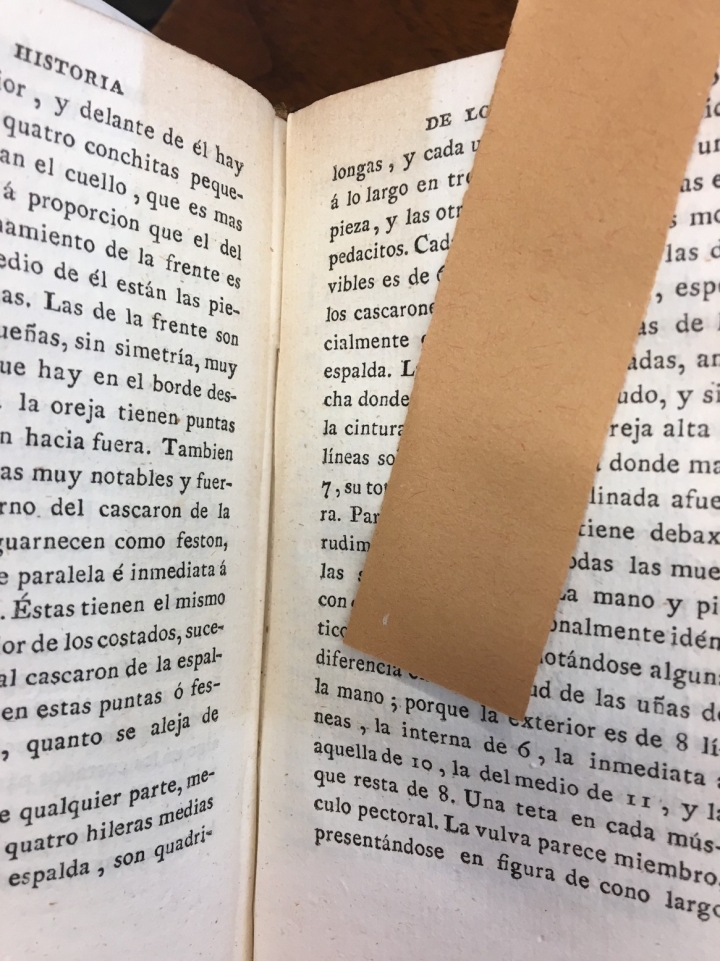
So what should you do if you find anything between the pages of a book in the Sutro collection? Leave the item in place and let a librarian know what you’ve found and where. A note or marker might be an important part of the book’s history, or it might be damaging the book, or both! But whatever the object is, think of it as a reminder of readers who’ve come before you and spend a moment imagining how it might have made its way into the book.
This post and all of the images are by Isabel Breskin, intrepid Sutro Volunteer.